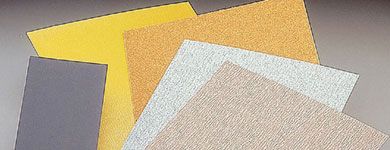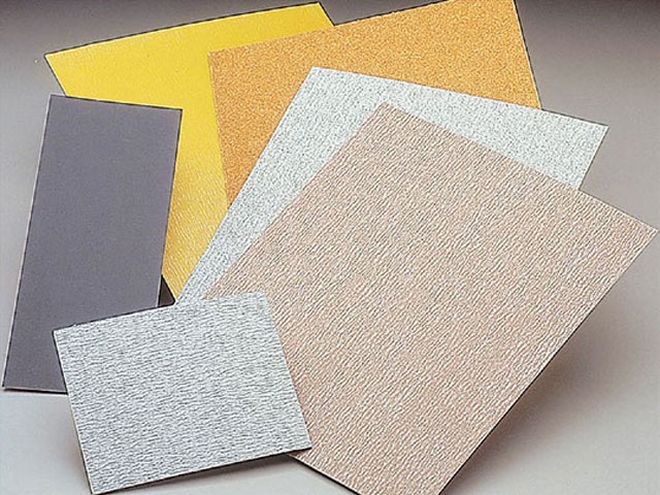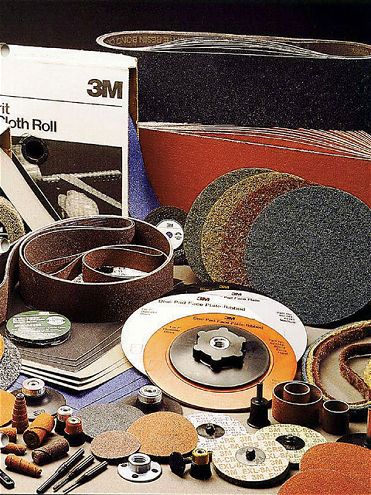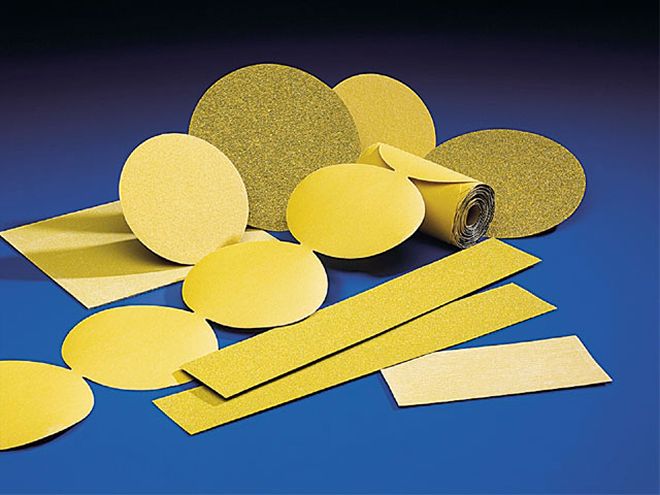
 Sandpaper is sandpaper, right? Not so. Cheap, light-duty, dime-store sandpaper will often be better at pissing off the user than removing material. Pass up on the cheap stuff and stick with professional-type industrial-grade paper and discs like that offered by 3M, Norton, or Carborundum. There's nothing worse than abrasives that wear out in nothing flat.
Sandpaper is sandpaper, right? Not so. Cheap, light-duty, dime-store sandpaper will often be better at pissing off the user than removing material. Pass up on the cheap stuff and stick with professional-type industrial-grade paper and discs like that offered by 3M, Norton, or Carborundum. There's nothing worse than abrasives that wear out in nothing flat.
We all have sandpaper, grinding discs, and cut-off wheels and use them regularly out in the shop, but they're items we take for granted and use without much thought. Recently, while reloading my grinder with a new disc, I happened to take a closer look at the one I was loading and wondered what the story was behind it (perhaps being a new fan of that cable TV show, How It's Made, has piqued my curiosity). I went ahead and finished what I was doing but also decided to do a little investigating regarding abrasives.
Abrasives, like sandpaper or grinding discs, operate pretty much like cutting tools. The rough particles on sandpaper and discs are a coating of sharp-edged materials that cut much the same way a file does. But, sandpaper is sandpaper, right? Well, not exactly. There are actually two different types-or grades, as they're called in the industry-of sandpaper on the market: commercial and industrial. The commercial grade is the stuff commonly available at hardware stores. The industrial grade is usually available only through industrial supply stores and/or autobody supply jobbers. The industrial-grade abrasives found in the latter outlets are made from higher-quality materials and are designed to be used in production or commercial situations. In other words, this type of abrasive is the heavy-duty version and the type we should be using.
Starting with a few simple explanations, let's go over what grit is. When talking about abrasives, "grit" is a reference to the number of abrasive particles per inch of sandpaper. The lower the grit designation or number, the rougher the sandpaper; conversely, the higher the grit number, the smoother the sandpaper. It makes sense if you realize that fine sandpaper, like 1,200-grit for example, would require 1,200 tiny particles of abrasive to fit within 1 square inch of surface-they'd be pretty darn small. At the other end of the spectrum might be 36-grit, which would only have 36 big (relatively speaking) chunks of abrasive per square inch-pretty rough compared to 1,200-grit.

The grit you use depends on the job you need it to do. For example, 16- to 24-grit sizes are generally reserved for hard-backed grinding discs and are primarily used for stripping heavy rust or multiple coats of paint off heavy or thick material-not sheetmetal or thin stuff, because they're so aggressive they'd cut right through it if you aren't extremely careful.
The 36- to 60-grits are considered coarse but are usually the starting point for sheets of sandpaper, though these grits are also available in hard-backed discs, as well. Still considered fairly aggressive, these grits can be used for heavy sanding and stripping of heavy material, but they can also be used on thin material. Just remember that one still has to be careful if these grits are used in conjunction with a sanding machine of any sort, versus by hand. Eighty- to 120-grits are considered medium and used primarily for smoothing of a surface and/or removing smaller imperfections and marks. Grits in the 150 to 180 range are considered fine and good for a final sanding pass before a primer coat, for example. The 220- to 240-grits are designated as very fine and are good for sanding between coats of primer or sealer. The 280- to 320-grits are labeled extra fine and are used for removing dust spots or fine scratches between finish coats. The 360- to 600-grits are considered super fine and are used for sanding a surface to remove some luster, surface blemishes, or finer scratches. Then, 800- to 2,000-grits are designated ultra fine and are usually reserved for final color sanding of paint or for final finishing of metal that's destined to remain uncoated.
So, now that we've covered the basics of grit, we'll look at the difference between commercial- and industrial-grade abrasives. There are three main components to sandpaper: the abrasive grit, the backing material, and the bonding agents that attach the grit to the backing, whether it be discs or paper. Industrial-grade sandpaper uses higher-quality (read that as heavy-duty) components as well as tighter manufacturing tolerances (read that as harder and sharper grit that are less likely to break down or wear out, better bonding agents that hold the abrasive to the backing material, and heavier-duty backing that is less likely to tear or wear through).
 Abrasives come in a wide array of designs: 9x11 sheets; 5-, 6-, and 8-inch-diameter discs; 4x8 sheets; and 2-1/4x17-1/2-inch long-board paper being the most common in the autobody trade. All are available in a wide variety of grits, and the 9x11 is the standard for wet or dry paper.
Abrasives come in a wide array of designs: 9x11 sheets; 5-, 6-, and 8-inch-diameter discs; 4x8 sheets; and 2-1/4x17-1/2-inch long-board paper being the most common in the autobody trade. All are available in a wide variety of grits, and the 9x11 is the standard for wet or dry paper.
Metalworkers and bodymen use a sanding procedure sometimes called "going through the grits." Not to be confused with a good old Southern breakfast, it refers to the process of sanding where one uses progressively finer pieces of sandpaper to get a smooth finish. By going through the grits, each progressive sanding step removes the scratches left over from the previous step. Skipping grits to save time is not necessarily a good idea, as you'll usually end up sanding longer just to remove the scratches left by the previous grit. You'll always want to start low with coarser grit, and then work your way up to a finer grit.
There are also different types of sandpaper, specifically, or more commonly, open-coat and closed-coat. Open-coat sandpaper has gaps and open spaces between the grits, which help prevent clogging by giving the removed material a space to separate or fall away from the paper or disc. Closed-coat is better for sanding metal finishes, as it's more aggressive but does clog a bit easier on softer materials like primer or some body fillers.
Though not a complete course on abrasives, hopefully this will give you a bit of a background on a common tool we all use without much thought, and a basic guide to sandpaper and sanding disc choices.